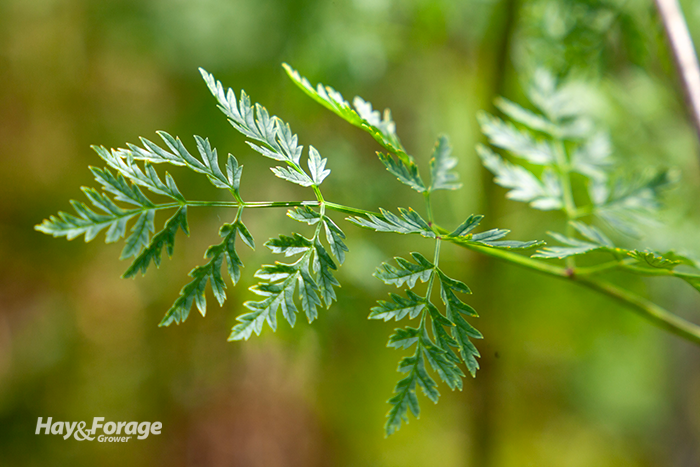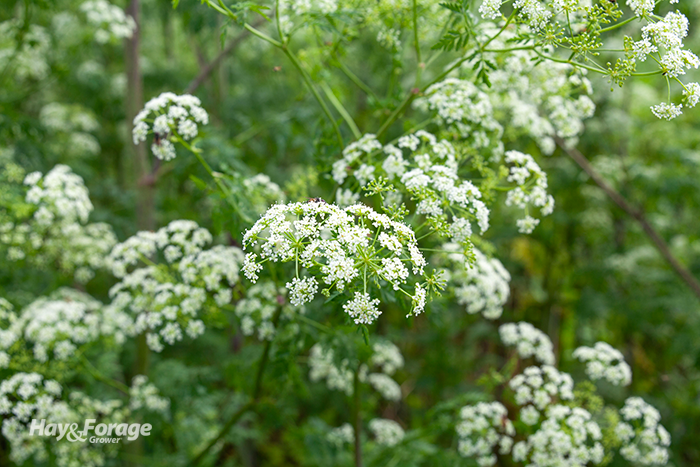
The philosopher Socrates was sentenced to death in 399 B.C. for not believing in the popular Greek gods of his time and place. Without the option of an electric chair or firearm, the philosopher’s sentence — like that of many others — was to drink some poison hemlock juice. It’s not described as a pleasant or quick way to go.
Over 2,400 years later, poison hemlock still remains a lethal threat, but mostly to grazing livestock or where the weed is harvested in hay. In fact, it’s one of the first weeds to appear in pastures and hayfields, according to Kevin Bradley, an extension weed specialist with the University of Missouri.
Poison hemlock can be found growing in ditches, roadways, fencerows, shaded areas of pastures, and in no-till cropping systems. The biennial weed forms a basal rosette of leaves during the first year and then bolts a flower stalk in its second year. It can grow to 10-feet tall.

Although they look similar, Bradley cautions people not to confuse poison hemlock with wild carrot, also known as Queen Anne’s lace. “Poison hemlock’s white flowers form in umbrella-shaped clusters like those of wild carrot, and both have hollow stems,” he notes, “but poison hemlock’s purple-mottled stem is hairless. Wild carrot also rarely grows taller than 2 feet and poses no danger to humans or livestock.”
Missouri’s extension veterinary toxicologist, Tim Evans, explains that every part of poison hemlock contains gamma-coniceine, coniine, and other toxic compounds that are harmful, even in small amounts. “These toxins affect cattle most, particularly with respect to birth defects, but they also affect sheep, goats, swine, horses, and other domestic animals,” he says.
Evans notes that the toxins in poison hemlock affect the animal’s nervous system, initially causing tremors that may progress to total paralysis and suffocation. Symptoms usually appear within an hour of ingestion, and an animal can die within a few hours.
“Cows that eat poison hemlock during the first trimester of pregnancy may give birth to calves with skeletal deformities, a condition known as crooked calf syndrome,” Evans explains. The offspring of pigs, sheep, and goats can exhibit similar signs.
The most palatable plant part of immature poison hemlock is the leaves. “Typically, animals avoid eating mature plants, but this is not the case when poison hemlock is accidentally incorporated into hay,” Evans says.
Beating it back
With the correct timing, controlling the biennial weed is not difficult. “Control poison hemlock with pasture herbicides early while it is in the rosette stage and before the plant forms flowers,” Bradley says. “Early control is important because mature plants with flowers do not respond as well to chemical control.”
Growth regulator herbicides or products with 2,4-D, dicamba, or 2,4-D plus triclopyr are good options for controlling poison hemlock in pastures. Bradley also cites research that has also shown dicamba plus glyphosate may offer more consistent control than 2,4-D plus glyphosate, but glyphosate can only be used when spot spraying or where injury to desirable forages can be tolerated.
Nonchemical control options include hand weeding, mowing, and tillage. When hand weeding or working around poison hemlock, Evans reminds farmers that the plant’s potent toxins can irritate the skin. He recommends wearing protective gear, including gloves, long sleeves, long pants, and eye protection.

